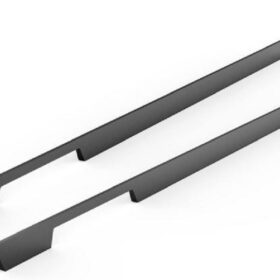Safety Considerations with Shutter Profiles
Shutter profiles play a vital role in the functionality and safety of a building. They are responsible for guiding and securing the opening and closing of shutters, ensuring that they operate smoothly and without incident. Proper consideration of safety factors during the design and installation of shutter profiles is essential to prevent potential hazards and ensure the well-being of occupants.
Structural Integrity
Wind Loading: Shutter profiles must be designed to withstand high wind loads without compromising their structural integrity. Strong winds can exert significant forces on shutters, which can cause them to buckle or collapse if the profiles are not properly engineered. Adequate reinforcement and anchoring systems should be employed to ensure that the profiles can resist these forces.
Seismic Performance: In areas prone to earthquakes, shutter profiles must be designed to withstand seismic forces. The profiles should be able to maintain their shape and functionality during an earthquake, preventing the collapse of shutters and potential injuries to occupants. Seismic restraints and bracing systems can be incorporated to enhance the stability of the profiles.
Fire Safety
Fire Resistance: Shutter profiles should possess fire resistance properties to prevent the spread of flames in the event of a fire. Fire-resistant materials and coatings can be used to delay the combustion of the profiles and provide occupants with valuable time to evacuate.
Escape Routes: Shutter profiles should not obstruct escape routes or interfere with the opening of emergency exits. They should allow for easy and rapid egress during an emergency situation. Fire escape routes should be clearly identified and maintained free of obstructions caused by shutter profiles.
Human Factors
Pinch Points: Shutter profiles should be designed to minimize the risk of pinch points where fingers or other body parts can become trapped. Smooth, rounded edges and proper clearances should be incorporated to prevent injuries. Pinch-resistant mechanisms can also be employed to enhance safety.
Accessibility: Shutter profiles should be accessible for maintenance and operation. They should allow for easy adjustment, cleaning, and repair without compromising safety. Accessibility features, such as easy-to-reach handles and height-adjustable brackets, should be considered to facilitate maintenance and minimize the risk of accidents.
Safety Mechanisms
Interlocks: Interlocks can be incorporated into shutter profiles to ensure proper sequencing and prevent unintended operation. These systems prevent the shutters from closing or opening out of order, reducing the risk of collisions and injuries.
Sensors: Sensors can be used to detect obstacles in the path of the shutter and automatically stop its operation. This feature prevents damage to the shutter and potential injuries to personnel or objects.
Compliance and Standards
Building Codes: Shutter profiles must comply with relevant building codes and safety standards. These codes specify requirements for wind resistance, fire resistance, and human factors to ensure the safety of the building occupants.
Industry Standards: Industry standards, such as the American Architectural Manufacturers Association (AAMA) 1602 standard, provide guidelines for the design, performance, and testing of shutter profiles. Compliance with these standards ensures that the profiles meet industry-recognized safety criteria.
-
2024-11-29Top Trends in Modern Kitchen Cabinet Pulls for 2024
-
2024-11-28The Ultimate Guide to Modern Kitchen Cabinet Pulls- Materials, Styles, and Tips
-
2024-11-27Elevate Your Kitchen Design with These Must-Have Modern Cabinet Pulls
-
2024-11-26Sleek and Stylish- The Best Modern Kitchen Cabinet Pulls for a Contemporary Look










